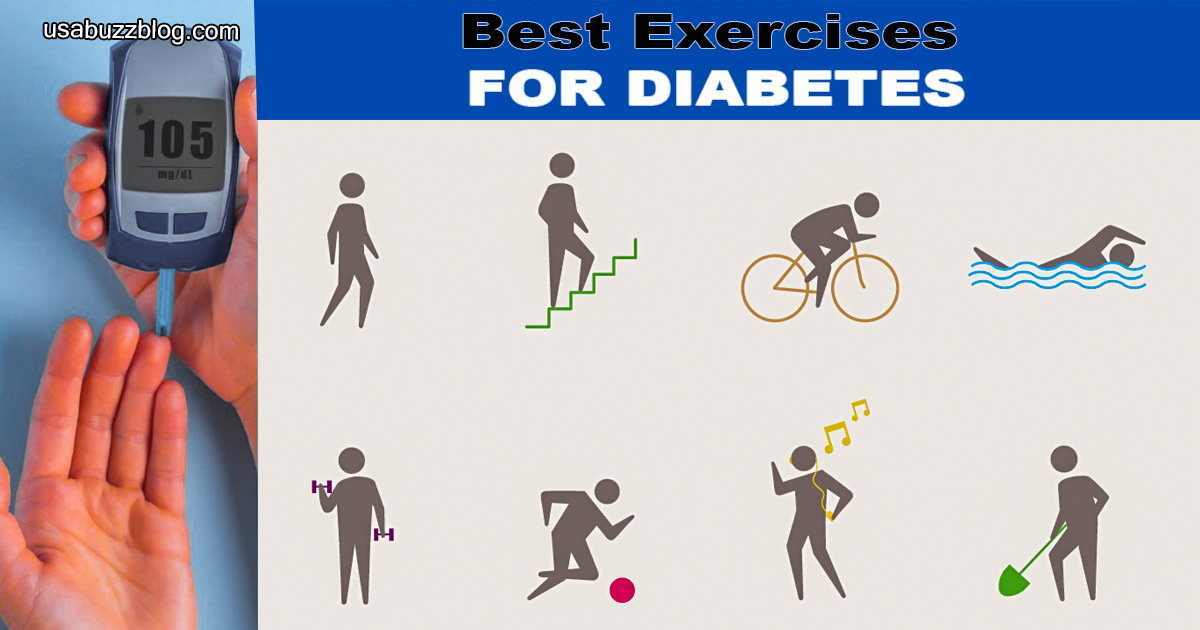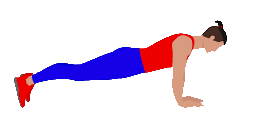
Introduction
Living with diabetes requires embracing healthy habits, and exercise stands as a cornerstone of effective management. Regular physical activity offers numerous benefits, including improved blood sugar control, enhanced weight management, boosted cardiovascular health, increased energy levels, and reduced stress. This article delves deep into the benefits of best exercises for diabetes, explores various effective activities, and provides practical tips to get you started on your journey towards a healthier and more active life.
The Power of Best Exercises for Diabetes
Regular exercise plays a pivotal role in managing diabetes by:
- Improving Blood Sugar Control: Exercise helps your muscles utilize glucose for energy, leading to lower blood sugar levels.
- Promoting Weight Management: Physical activity burns calories and helps maintain a healthy weight, crucial for managing diabetes.
- Enhancing Cardiovascular Health: Exercise strengthens your heart, improves blood circulation, and reduces the risk of heart disease, a common complication of diabetes.
- Boosting Energy Levels: Regular physical activity can combat fatigue and improve your overall energy levels.
- Reducing Stress: Exercise acts as a natural stress reliever, positively impacting blood sugar control and overall well-being.
Exploring the Best Exercises for Diabetes
Here are some of the best exercises for diabetes, categorized to appeal to diverse preferences and fitness levels:
Aerobic Exercises:
- Brisk Walking:
 Simple, accessible, and effective, walking is a fantastic choice for most individuals. Aim for 30 minutes of brisk walking most days of the week.
Simple, accessible, and effective, walking is a fantastic choice for most individuals. Aim for 30 minutes of brisk walking most days of the week. - Cycling:
 Enjoy the outdoors or exercise indoors with a stationary bike. Cycling is a low-impact option that engages various muscle groups.
Enjoy the outdoors or exercise indoors with a stationary bike. Cycling is a low-impact option that engages various muscle groups. - Swimming:
 Swimming offers a refreshing and joint-friendly way to exercise. It’s ideal for people with joint pain or injuries.
Swimming offers a refreshing and joint-friendly way to exercise. It’s ideal for people with joint pain or injuries. - Dancing:
 Turn up the music and get moving! Dancing is a fun, social way to get your heart rate up and improve coordination.
Turn up the music and get moving! Dancing is a fun, social way to get your heart rate up and improve coordination.
Strength Training:
- Bodyweight Exercises:
 Utilize your own body weight for resistance training. Exercises like squats, lunges, push-ups, and planks are excellent options.
Utilize your own body weight for resistance training. Exercises like squats, lunges, push-ups, and planks are excellent options. - Free Weights:
 Use dumbbells or kettlebells to build muscle strength and improve bone density.
Use dumbbells or kettlebells to build muscle strength and improve bone density. - Resistance Bands:
 Vector illustrations of stretching exercises poses, postures, and methods with resistance tube band.[/caption]These versatile tools offer a portable and affordable way to engage in strength training at home or on the go.
Vector illustrations of stretching exercises poses, postures, and methods with resistance tube band.[/caption]These versatile tools offer a portable and affordable way to engage in strength training at home or on the go.
Other Activities:
- Yoga: Enhances flexibility, balance, and mindfulness, with some styles incorporating a cardio element.
- Tai Chi: A gentle form of exercise that combines slow, controlled movements with deep breathing, promoting relaxation and balance.
- Team Sports: Playing basketball, soccer, or other team sports provides a fun and social way to get active.
Getting Started with Best Exercises for Diabetes
- Consult your doctor: Before starting any new exercise program, consult with your doctor to ensure it’s safe and appropriate for your health condition and fitness level.
- Start Slow and Gradually Increase Intensity: Begin with shorter and less strenuous workouts, gradually increasing the duration and intensity over time to prevent injuries and maintain motivation.
- Find Activities You Enjoy: Choosing best exercises for diabetes that you find fun and engaging will make it easier to stick with your routine in the long run.
- Incorporate Activity into Daily Life: Take the stairs instead of the elevator, park further away from your destination, or do some stretches during your work breaks.
FAQs
Q: How much exercise do I need with diabetes?
A: The American Diabetes Association recommends aiming for at least 150 minutes of moderate-intensity aerobic activity or 75 minutes of vigorous-intensity aerobic activity per week, combined with strength training exercises at least twice a week.
Q: Can I exercise if I have complications from diabetes?
A: Consult your doctor to determine the safest and most suitable exercises for your specific circumstances. Seek guidance tailored to your unique health needs to ensure your safety and maximize benefits.
Q: What are some signs that I need to stop exercising?
A: Stop exercising and consult your doctor if you experience any chest pain, dizziness, shortness of breath, unusual fatigue, or worsening of any pre-existing health conditions.
Conclusion
Exercise is a powerful tool for managing diabetes and improving your overall health and well-being. By incorporating the best exercises for diabetes into your daily routine, you can effectively control your blood sugar, maintain a healthy weight, and experience the numerous benefits of an active lifestyle. Remember, consistency is key! Start slowly, find activities you enjoy, and gradually increase your activity level over time. With dedication and the right guidance, you can empower yourself to manage your diabetes and live a healthier,
More Interesting Perks:
Recent Stories

Anwar Hussain
As an Architectural and Interior 3D Visualization Expert, I spend my days crafting stunning visuals that showcase the potential of design. But my passion for storytelling extends beyond the screen. At usabuzzblog.com, I leverage my design expertise to provide insightful and engaging content on Technology, Health & Fitness, Travel, News, Architecture, interior design, and the broader creative landscape. Join me as I explore the latest trends, share design tips, and unveil the stories behind the spaces we inhabit.

 Enjoy the outdoors or exercise indoors with a stationary bike. Cycling is a low-impact option that engages various muscle groups.
Enjoy the outdoors or exercise indoors with a stationary bike. Cycling is a low-impact option that engages various muscle groups. Swimming offers a refreshing and joint-friendly way to exercise. It’s ideal for people with joint pain or injuries.
Swimming offers a refreshing and joint-friendly way to exercise. It’s ideal for people with joint pain or injuries. Utilize your own body weight for resistance training. Exercises like squats, lunges, push-ups, and planks are excellent options.
Utilize your own body weight for resistance training. Exercises like squats, lunges, push-ups, and planks are excellent options. Use dumbbells or kettlebells to build muscle strength and improve bone density.
Use dumbbells or kettlebells to build muscle strength and improve bone density. Vector illustrations of stretching exercises poses, postures, and methods with resistance tube band.[/caption]These versatile tools offer a portable and affordable way to engage in strength training at home or on the go.
Vector illustrations of stretching exercises poses, postures, and methods with resistance tube band.[/caption]These versatile tools offer a portable and affordable way to engage in strength training at home or on the go.











